Description, planting, care and cultivation of Rocambol elephant garlic onions
Rocambol garlic is popular in Europe. It is grown in Siberia and Crimea. In the middle lane, the plant is rarely found in vegetable gardens. And in vain! One head can really satisfy a family of 4 people.
Some gardeners call the representative of the Liliaceae family Rocambol. In appearance, the upper part resembles a leek: flat leathery leaves extend from the thick "leg".
The heads are impressive in size. It tastes like garlic onions. The characteristic pungency and bitterness are softened. Added piquancy.
The plant is decorative: during flowering, it decorates the garden with lilac heads. The vegetable beds turn into flower beds.
Giant garlic
Because of its large heads, the plant is called elephant garlic. He came to Russia in the 19th century. But did not receive distribution. Spicy onions were popular in those days.
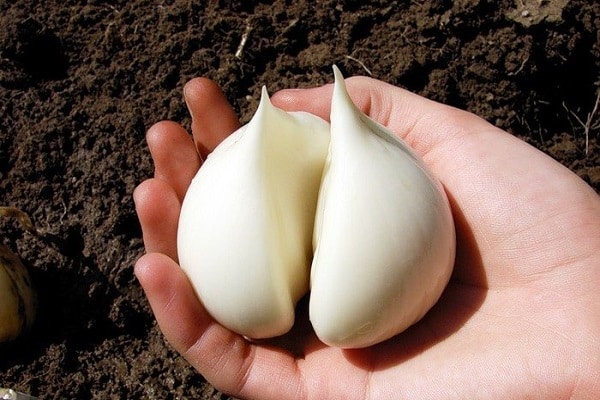
The plant is native to Asia. Sometimes, mistakenly, Rocambol is called Egyptian garlic. It is actively grown in the southern regions. The plant is unpretentious: it gives a decent harvest at a moderately warm summer temperature.
A representative of liliaceae is simply enough to grow from seeds or cloves. Subject to the rules of agricultural technology, it is realistic to provide the family with vegetable products for a year.
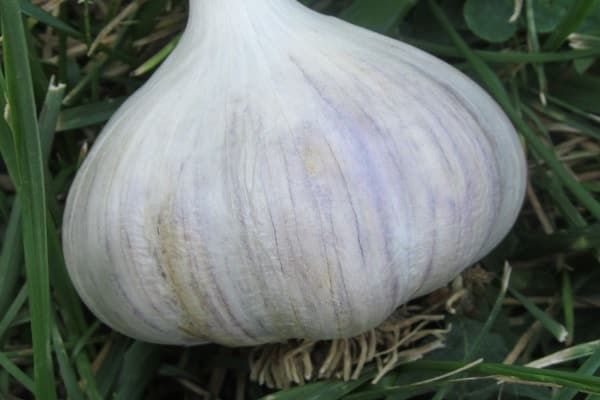
Onions and garlic Rocambol pleases gardeners with a non-standard taste. The bitterness is insignificant, the pungency is added. In the Mediterranean, the heads are baked and served as a hot snack.
Description
A large vegetable combines the features of two members of the lily family. The upper part has a stiff leg. A rosette with leathery leaves 1–2 cm wide departs from it. The color of the ground part is bright green with a matte emerald bloom.
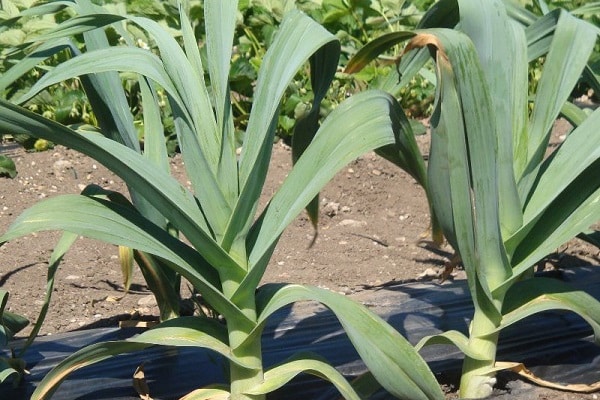
The Rocambol garlic bulb has a diameter of 6–10 cm. It is covered with hard scales. The number of teeth is from 2 to 6 pieces. The mass of the head with a minimum care is 100 g. Under favorable climatic conditions, it is possible to get a bulb of 450 g.
Air babies ripen underground (like some varieties of gladioli). They are used when landing. Arrows are crowned with purple flowers. The plant is very decorative during flowering. The seeds do not ripen.
According to the description, the taste of Rocambol garlic resembles both plants at the same time. Bitterness and characteristic smell are absent. Added piquant spice.

The vegetable is poorly stored. Tasty pickled or salted. Gardeners came up with the idea of using it as a dry seasoning for soups and main courses.
Summer residents talk about the benefits and dangers of Rocambol onion and garlic:
- the plant contains micro and macro elements (heals the body);
- phytoncides fight bacteria and viruses;
- ascorbic acid fights colds;
- carotene strengthens muscles (in combination with fats);
- B vitamins strengthen the nervous system;
- bitterness stimulates the appetite;
- there is a strengthening of immunity with vitamins of the PP group.
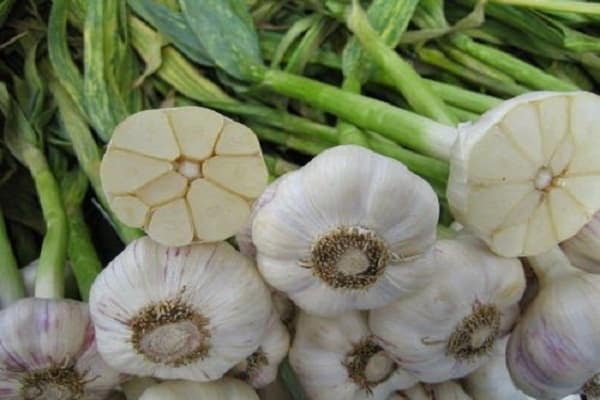
People with gastrointestinal diseases, who have increased acidity of gastric juice, chronic liver and gallbladder diseases, should eat bulbs with caution: give preference to baked products. It is not recommended for pregnant women and young children to eat it.
Gardeners grow the large Rocambol garlic as a useful plant. It is fruitful, tasty, decorates the beds.
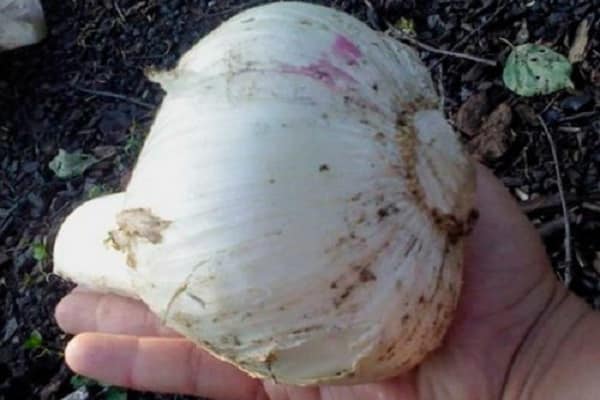
Types of garlic Rocambol
Biologists say the plant is a cultivar, not a hybrid. There are several types of very large Rocumboll garlic:
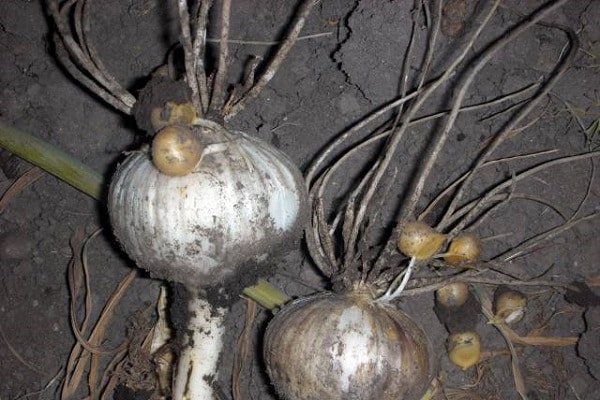
- Janissary. Newly bred giant garlic Rocambol. Differs in a balanced, spicy taste. Heads 6-7 cm.
- White elephant. Of the cultivated garlic, the largest garlic is Rocambol. Value: resistance of the bottom to decay, winter hardiness. Special feature: no flower arrows. Beige teeth (there are 7 of them in the bulb). Medium spicy.
- Pearl. The most fruitful and spicy. With competent agricultural technology, 4 kg / m² are obtained. Disadvantage: active shooting.
In culture, they are unpretentious. They differ in the color of covering scales, ripening period, taste. Among others varieties of onions, the types of Rocambol garlic are not well known. Most Popular Janissary. Gardeners prefer the common name: elephant garlic.
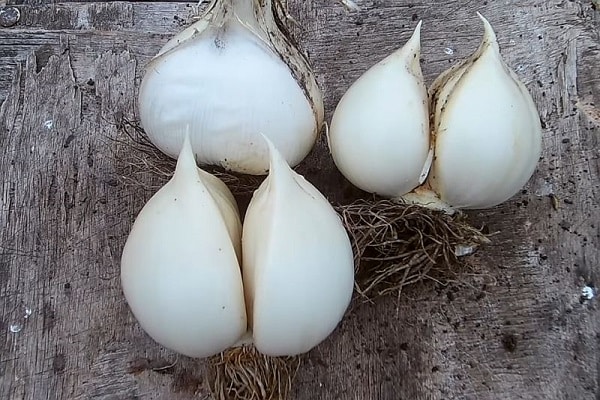
Reproduction of Rocambol garlic
The cultivation of a plant is determined by the two-year development cycle of Rocumboll, care and cultivation. Air bulbs (babies) ripen underground, around the bottom. Usually there are 15–20 of them. Bulbules are harvested when harvesting from biennial plants.
The advantage of the reproduction of Rocambol garlic: in the first year, a bulb grows from children, commensurate with a chicken egg. Gardeners use it for food: the taste does not differ from the taste of the mother plant.
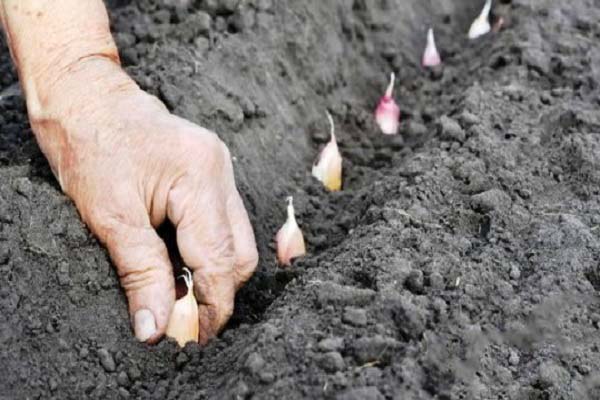
To obtain seed, it is recommended to re-plant the one-tooth. A full-fledged bulb will grow from it. Large and healthy ones are selected for reproduction. They are dried in a shaded place for 3-5 days. Then the roots and tops are cut off, wrapped in paper and stored in the refrigerator fruitter until planting.
The head is divided into teeth, the upper covering scales are carefully removed. The affected parts are discarded, healthy ones are planted in a prepared ridge.
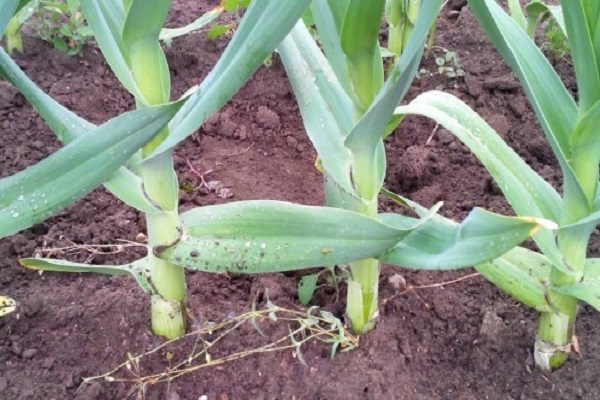
Tillage and preparation for planting
Rocambol is a giant garlic that requires a prepared ridge for growth and development. The landing site is open and lighted. The soil should be cultivated in advance:
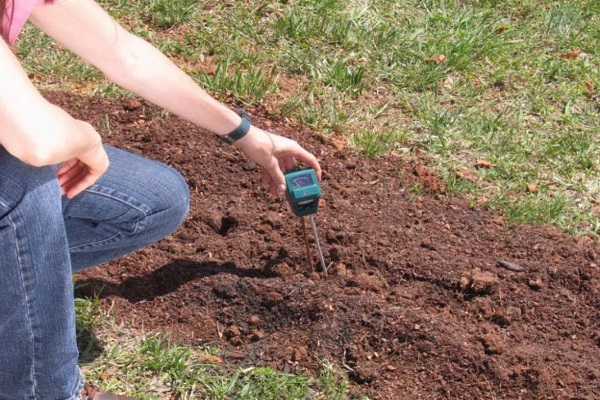
- Check acidity. With increased - add dolomite flour, slaked lime, furnace ash (1 liter per 1 m²).
- Add organic matter (mature compost, rotted manure) 1 bucket per 2 m². Dig up on the bayonet of the shovel.
- Planted in a garlic bed, Rocambolle loves loose, breathable soil. On heavy (clay, loam) sanding is required (a bucket of 3-4 m²), on light (sand, peat) - clay.
- After a week, add a mineral complex for bulbous crops (according to the manufacturer's instructions).
- Select planting material. Discard damaged or diseased teeth.
- Remove the top layer of husk from the children (it prevents germination).
- To prevent shooting, the material is heated in water at 40–45 ⁰С for 2 hours (to be carried out only during spring sowing).
- Planting garlic is done 5-7 days after soil preparation.
- Mark the rows. Distance: 15–20 cm. Keep 20 cm between the holes. When sowing with children, the scheme changes: 5 x 10 cm.
General rule: it is recommended to plant the planting material in the soil to a depth of 2-3 tines.
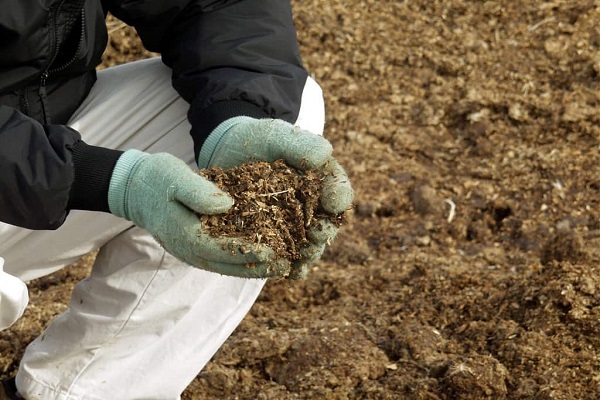
Planting Rocumboll in spring
Growing elephant garlic from seeds in the spring allows for a crop that is better stored. It is recommended to warm the cloves before planting in a pale pink solution of potassium permanganate. This will disinfect the planting material and accelerate germination.
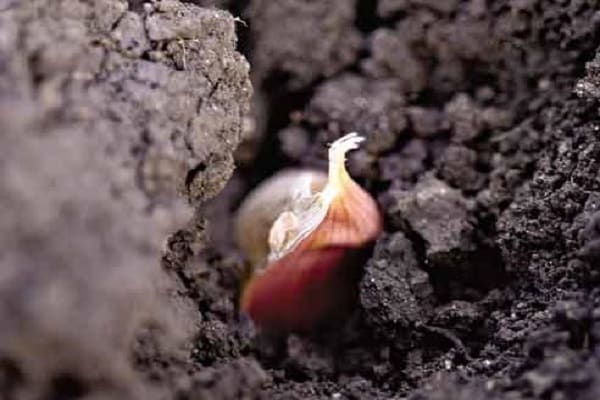
When to plant the Rocambol garlic?
It is a cold-resistant crop. Planting should be carried out when the soil warms up to 5-6 degrees Celsius. The plant is not afraid of returning cold weather - a mixture of onions and garlic.
According to the ripening time, marketable bulbs will be put on the table in August-September. Seeds of elephant garlic are selected from them. They can be planted before winter.
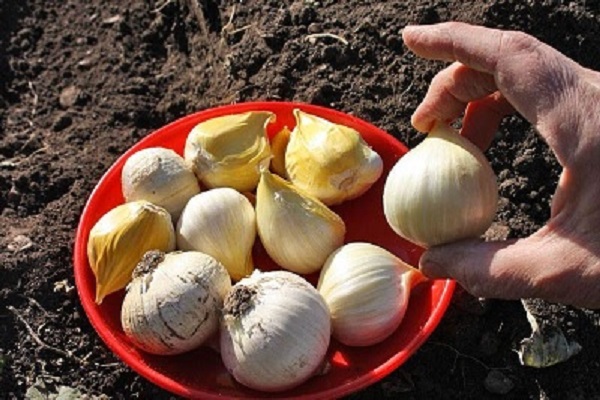
Planting Rocumball in the fall
Children or teeth that have grown up in the summer serve as planting material. They are selected, viewed. Sick or gnawed by mice or insects are discarded. Dry. Rocambol's elephant garlic dries quickly and shrivels. It should be ventilated in the shade.
To plant onion should be 2-3 weeks before stable subzero temperatures: the cloves should take root... This will help them get through the winter.

Until the onset of cold weather, the garden bed remains uncovered. Then it is required to mulch the planting with a layer of 5-10 cm. Rotten sawdust, neutral peat will do. In the spring, after the snow melts, the mulch is carefully raked to the side.
The vegetable garden serves as a nursery for Rocumboll: the seeds ripen in the summer and are planted in the fall. Advantages of winter sowing: saving time in spring, getting early production. Disadvantage: the harvested vegetable does not store well.
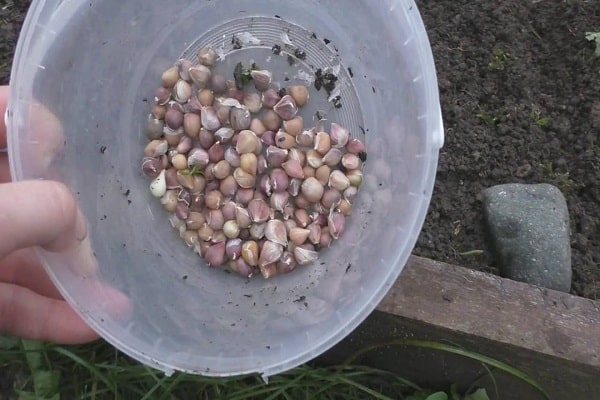
Predecessors
Rocambol grows like garlic. This plant is demanding on soil fertility. It actively takes nutrients from it.
The grown garlic feels good after cabbage, beans, turnips, radishes. The gardener runs the risk of being left without a crop when planting Rocumboll after potatoes, onions and any liliaceae.
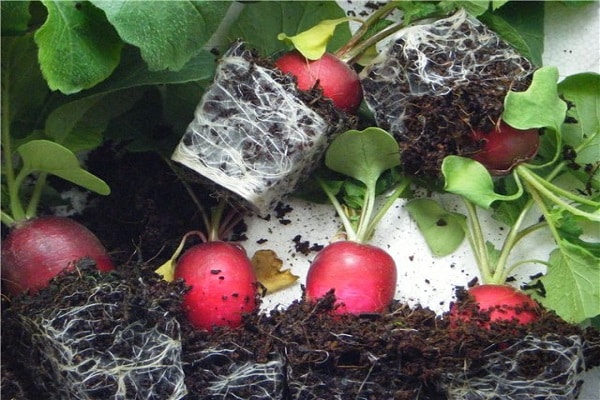
After vegetables and any spicy herbs, before planting large Rocambol garlic, you should apply mineral and organic fertilizers to the soil.
The garlic-onion plant gives large heads when planted before winter after salads, arugula.
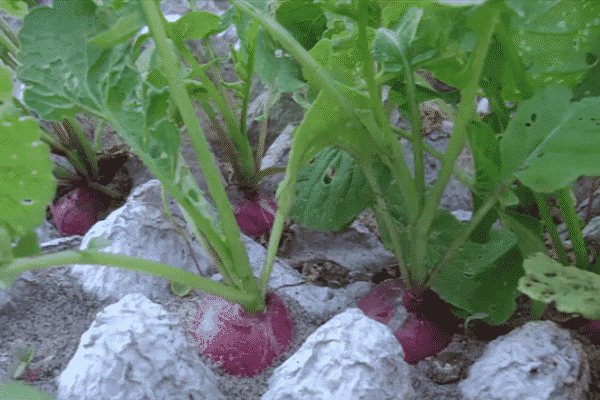
Care
To get the huge fruits of Rocambol garlic, you have to try:
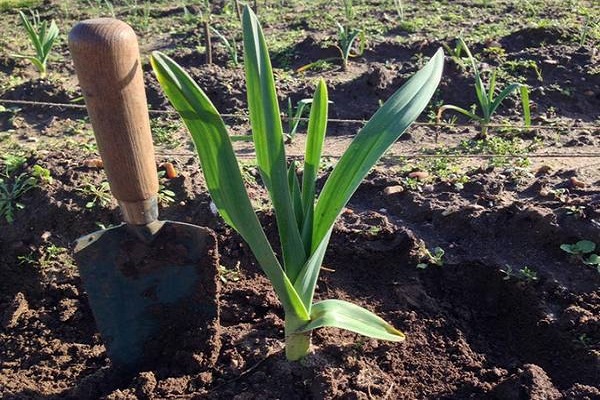
- it is necessary to carefully weed the ridges;
- the soil must be kept moist;
- in case of prolonged rains, it is recommended to arrange water diversion;
- the soil should be loosened (especially after rains);
- planting Rocambol onions and garlic tolerate the heat well;
- in shooting varieties, peduncles should be broken;
- growing Japanese garlic is impossible on poor soil: fertilizing is needed (one organic is done after germination, the second is mineral - after 10 days, the third is mineral during flowering).
Top dressing is done if the ridges were not filled with fertilizers when planting.

Collection
It is necessary to dig out the Rocambol garlic when the lower leaves turn yellow and begin to dry out. The bulbs are taken out of the ground carefully, using a pitchfork. Cleaning is done in dry, sunny weather. The dug vegetable is kept in the sun for 2 hours. Ultraviolet light disinfects heads.
Then the crop is laid out to dry for a week under a canopy in the shade. At the finished Rocumball, the roots are cut off without damaging the bottom, and the tops, leaving 15 cm.
Garlic planted in spring is suitable for winter storage. After collection, the heads are put into plastic boxes. Keep in a cool dry place.
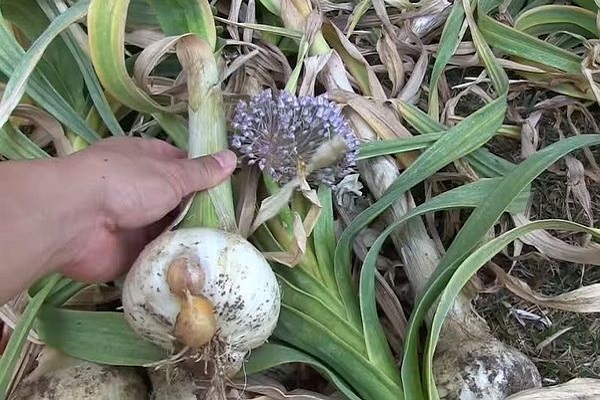

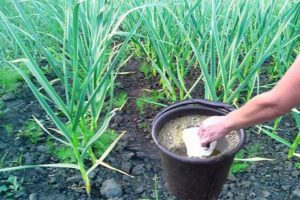

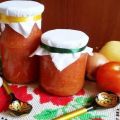

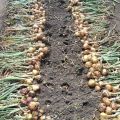
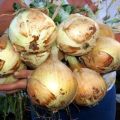
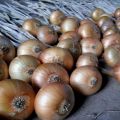
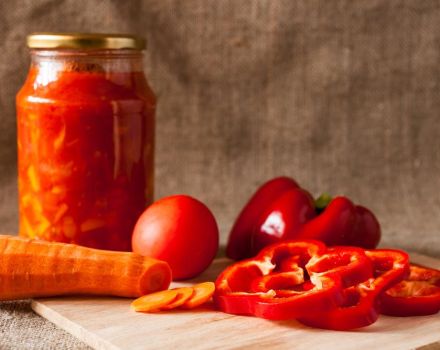
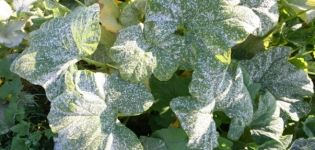
Again surprised! I was grown just like a flower at one time. Then I threw it out altogether. How could I know that it was garlic, although the smell was, and the size is really impressive. There were thoughts that it can be eaten, but those who give it to me gave, was grown like a flower, when I got a lot of perennial flowers, I dug it out of course. A madhouse. And he was so tall with a huge peduncle! So sorry. Schnitt-bow at first, was also like a decoration, then they began to eat it, they recognized it in time Do not be surprised - it was a very long time ago. There is almost no information.